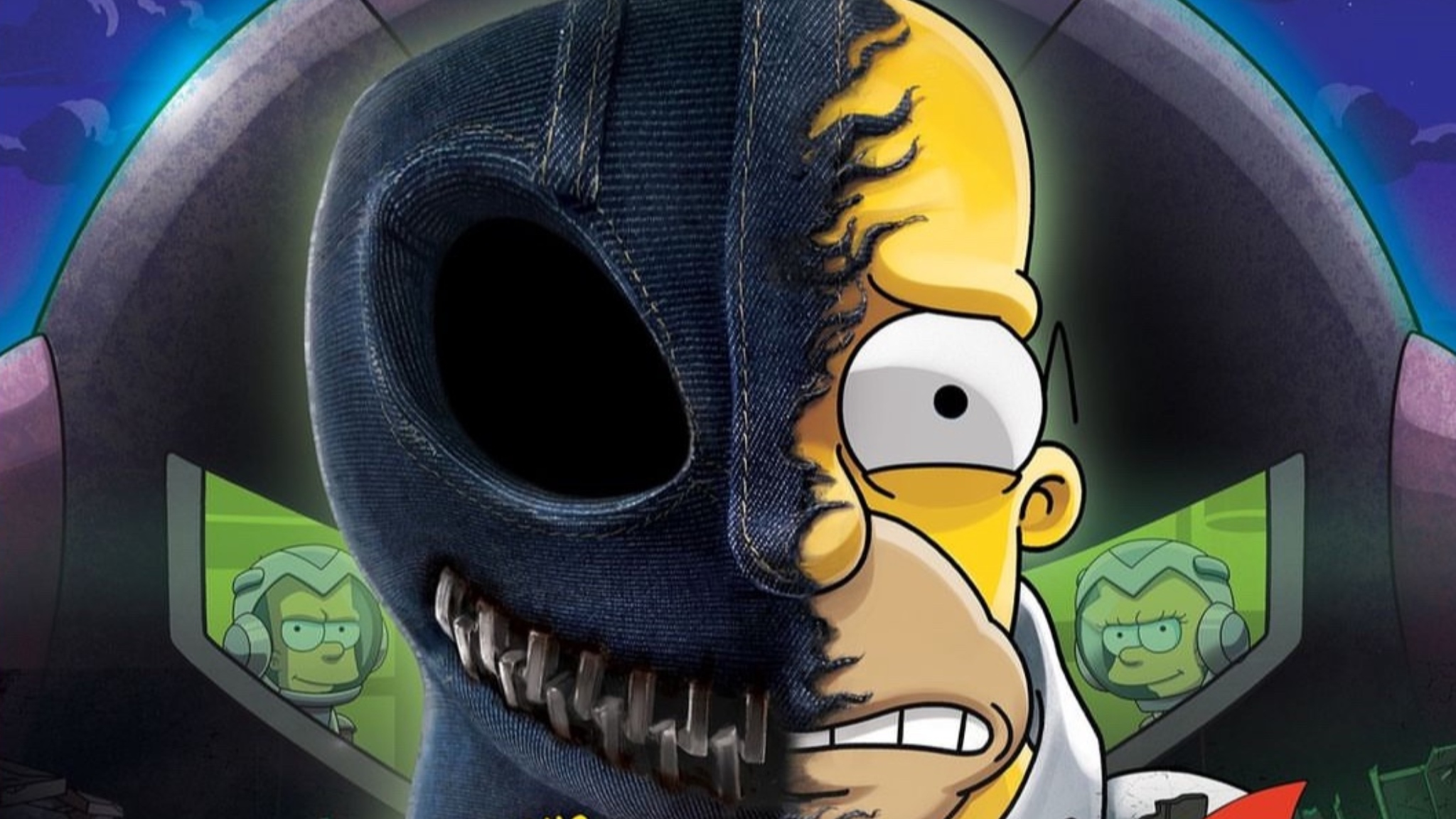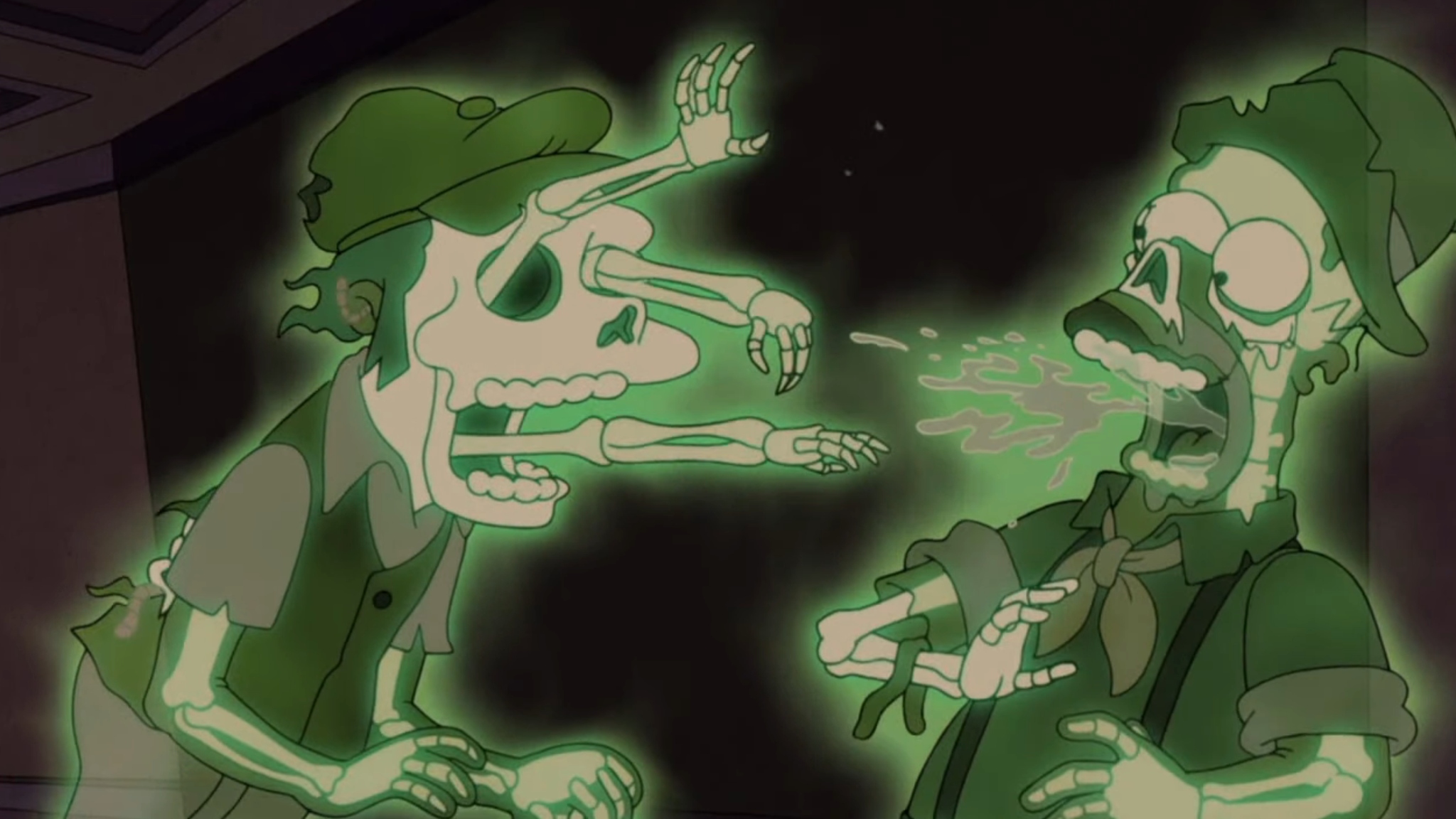

As a longtime fan of The Simpsons and its annual Halloween special, Treehouse of Horror, I must say that this year’s edition, XXXV, left me with a sense of ‘meh-mare’. After the tantalizing teaser trailers throughout the summer, I was eagerly anticipating a frightfully fun time.
The popular series, The Simpsons, has come back with another terrifying installment in its ongoing “Treehouse of Horror” series. “Treehouse of Horror XXXV” offers fresh perspectives on stories like Pacific Rim and Venom, among others. Although The Simpsons‘ Halloween specials usually air after the holiday itself, in November, this year’s offering still promises a chilling experience. As fans eagerly awaited the newest episode following hints dropped earlier this summer about a Venom parody featuring stop-motion animation, expectations ran high.
“Treehouse of Horror XXXV” presents three distinct tales, introducing them with an opening inspired by “The Book of Life” and “Maya and the Three,” created by Jorge Gutierrez. The first story is titled “The Information Rage,” where heated political opinions transform into colossal attacking beasts. In the second tale, “The Fall of the House of Monty,” Mr. Burns encounters the vengeful spirits of his mistreated workers. Lastly, the final segment is called “Denim” and features Homer being taken over by a pair of lively denim jeans that have sprung to life via stop-motion animation. Here’s a summary of what unfolds in this latest special:

The Information Rage
In the initial part of “The Simpsons” episode named “Treehouse of Horror XXXV,” titled “The Information Rage,” begins with Lisa managing to persuade Springfield to switch to LED lightbulbs. This decision sparked a series of protests from those who were reluctant to give up their traditional bulbs, escalating into a heated political dispute that ultimately fractured the entire town. The mounting anger on both sides eventually summons colossal monsters from the ocean depths; the conservative sentiment materialized as a towering red monster, while the liberal sentiments gave rise to a massive blue monster.
In the midst of colossal beasts ravaging their hometown, Professor Frink constructs a device requiring a brother-sister duo to operate it effectively. When the initial pair perishes, Bart and Lisa are thrust into a scenario reminiscent of Pacific Rim’s Jaeger program, where they cooperate to vanquish the monsters. Fusing their unique perspectives, the siblings agree to tackle the more significant problems at hand. They strive to encourage everyone to break free from their ideological bubbles, but it doesn’t take long for the beasts to destroy the town once more, plunging society into an eternal downfall. Sadly, this unremarkable tale, built on pop culture references, falls short of others in terms of scare factor and serves as an underwhelming beginning to the year. Such stories often go overlooked amidst the competition.

The Fall of the House of Monty
In the second part of the episode, things improve significantly. Contrary to its title’s namesake, Edgar Allan Poe’s “The Fall of the House of Usher” poem, “The Fall of the House of Monty” is quite different, with a brief appearance by Bart Raven from the initial “Treehouse of Horror”. This segment takes us back in time and paints a picture of Springfield where everyone toils relentlessly for Mr. Burns. They spend their days working in his corn syrup factory and nights constructing his mansion. On Thanksgiving, Mr. Burns proposes a feast for his workers, but only if they can outdo him in the tradition of breaking a wishbone.
Without a doubt, this setup doesn’t succeed, but Mr. Burns manages to keep dinner out of their reach regardless. Later, he learns that he’ll be afflicted by a curse from the wishbone after failing to honor his promise following his loss. Consequentially, he discovers the implications of this curse. As his employees meet untimely and gruesome ends in the factory, their spirits return to haunt Mr. Burns at night. This constant torment drives him to insanity, eventually leading him to commit suicide by jumping into a fire (which results in his immediate descent into Hell). The second part of the story moves more swiftly than the first, but it significantly improves upon it.
Title “The Demise of Monty’s Manor” showcases gruesome character depictions for Homer and the other deceased labor spirits, and the portrayal of Burns self-immolating and being hauled to Hell is accurately chilling. This type of episode is one of Treehouse of Horror’s strengths, as it’s the only occasion when characters can be so dramatically eliminated. One could hope that after the initial two segments, the conclusion would be particularly impactful. To some extent, it was? However, the effectiveness may differ among viewers.

Denim
In the third part of the series, which was heavily promoted during the summer, “The Simpsons” collaborated with Stoopid Buddy Studios – the team behind “Robot Chicken” and others. This short story presents an alternate universe where Homer is single and tries to win over Marge, a charming waitress at a local diner (with a witty name like “Non-Canonical”). While shopping for pants, Homer encounters a pair of stop motion jeans that mysteriously appear from a portal. He finds these jeans extremely comfortable. Later, while visiting the diner, the jeans unexpectedly come to life and save Marge from a robbery by Snake.
The denim jeans, originating from the 501 Galaxy’s planet Wranglor, were initially a symbiote disguised as everyday clothing. Due to acid rain on their home planet, they acquired an acid wash, making them appear worn, outdated, and somewhat unattractive. These symbiotes require human hosts for survival, and Homer, with his broad figure and distinctive gas, proved to be the ideal match.
The final segment was indeed saved for last because of the stop-motion incorporated action, and it’s indeed great to see in the episode itself. But for being a Venom parody, it’s kind of lackluster in that impact. Homer never has a full transformation as teased by the image of him in the promotional materials as these jeans just remain jeans the entire time. There is a great chase sequence with the jeans that moves them around in fun ways, and Homer flailing about when that happens is a fun visual. But it just never quite goes as far as you would hope.

Is Treehouse of Horror XXXV Any Good?
In essence, “Treehouse of Horror XXXV” isn’t primarily a horror or comedy-focused tale, as it lacks significant elements of both. Regrettably, this is the general feeling that permeates the entire piece. Each short has its unique charm, but none are likely to become iconic compared to some of the more memorable segments in their collection. “Denim” offers the most potential due to its central concept, but it falls short of what one might anticipate as the climactic Treehouse of Horror segment.
It’s clear this year that The Simpsons continues to push boundaries with their Treehouse of Horror episodes, despite some lackluster performances in the past. This year’s episode, number XXXV, isn’t the best, but it certainly isn’t the most boring either. With plenty of intriguing concepts, fans should definitely tune in when the new episode becomes available for streaming on Hulu the day after its original broadcast on Sunday, November 3rd, if they missed it live.
Read More
2024-11-04 07:09